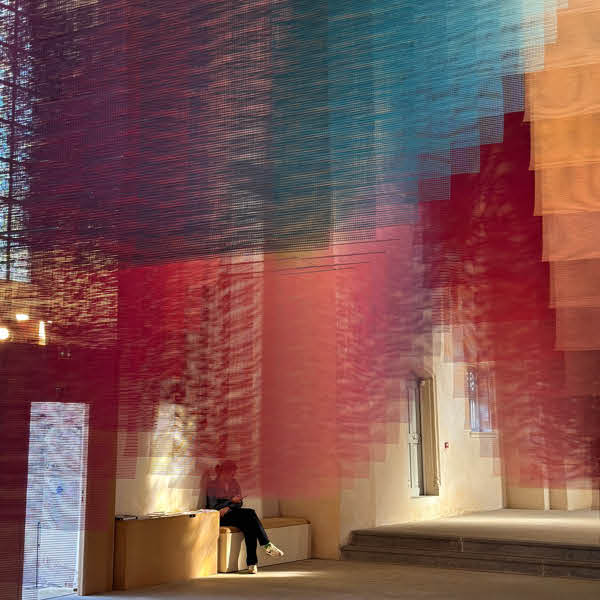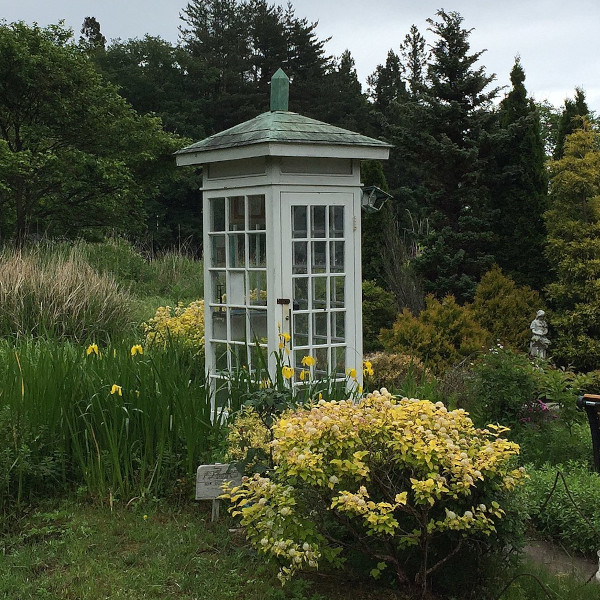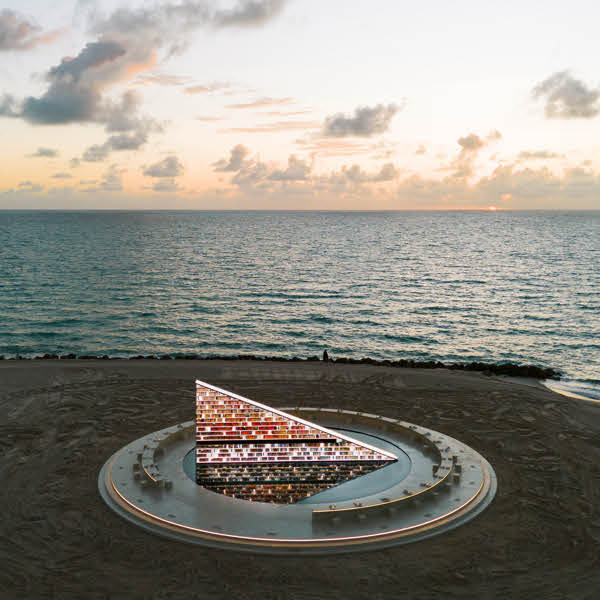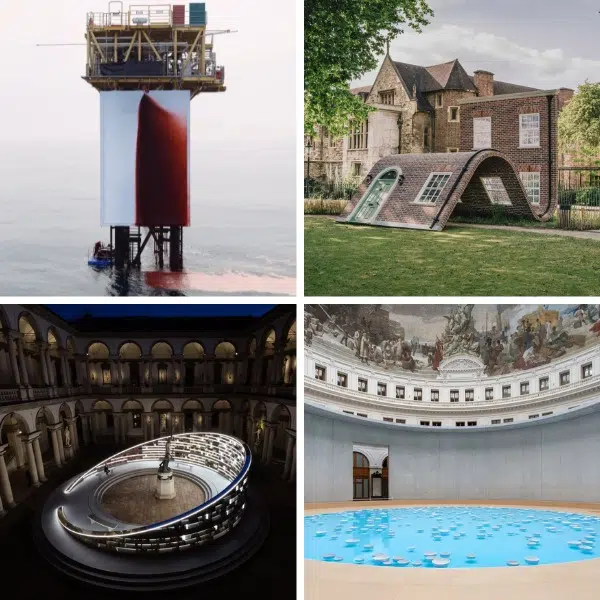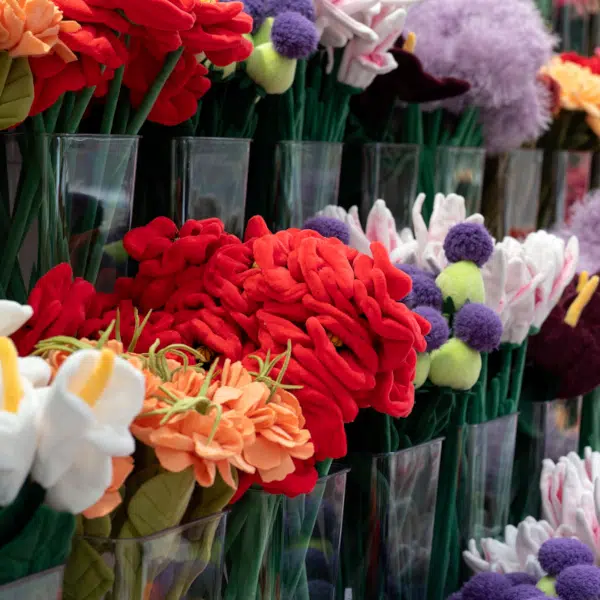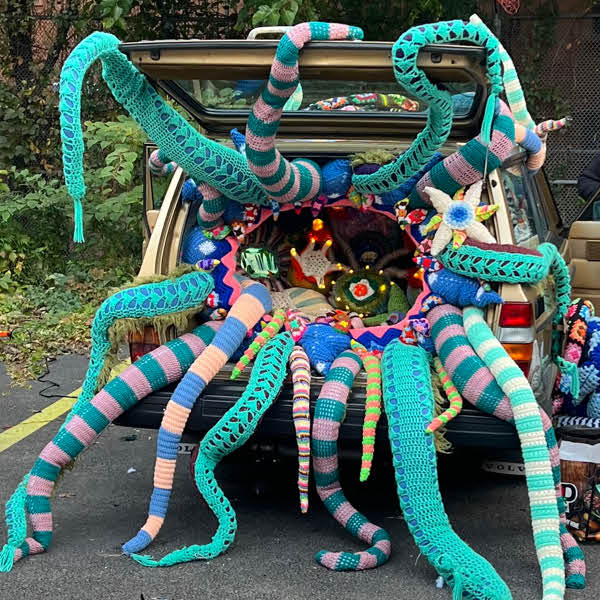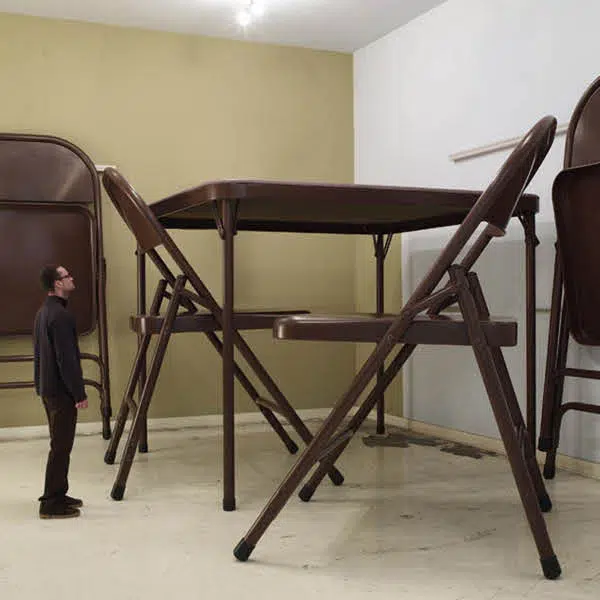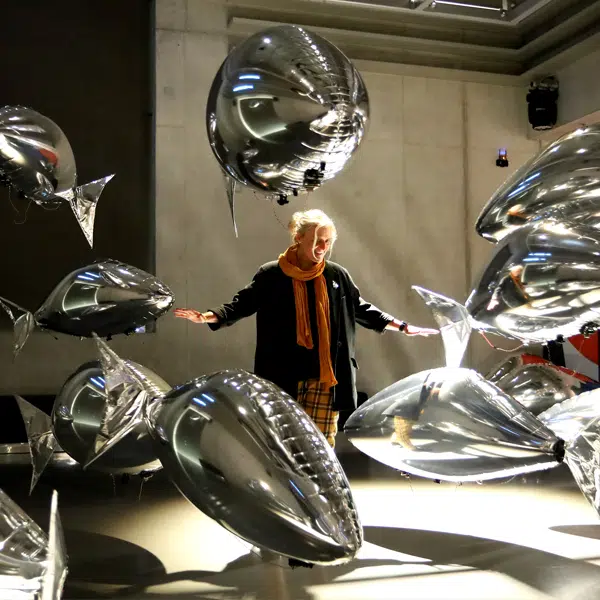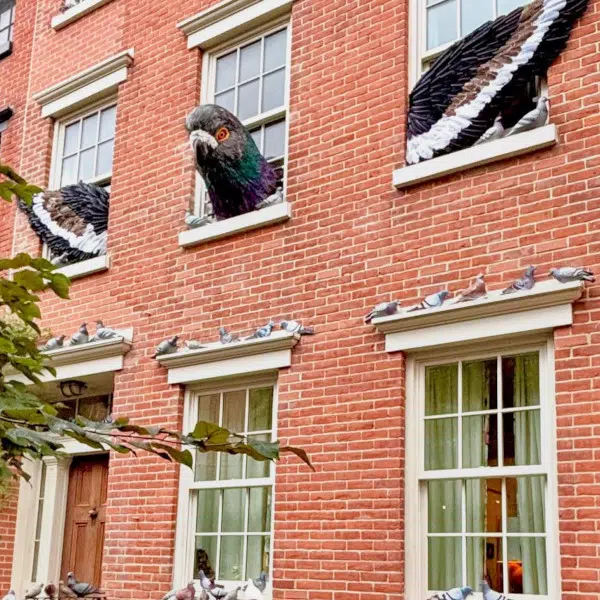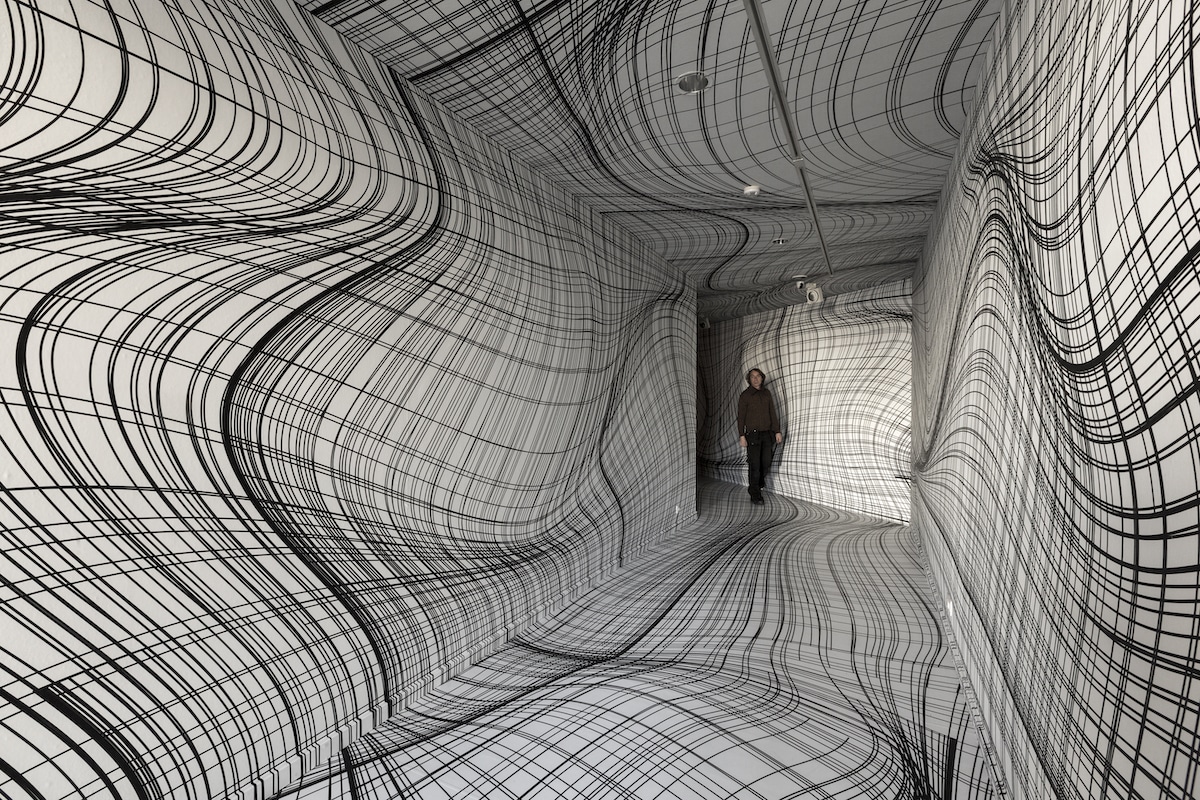
ING Art Center, Brussels, 2016. (Photo: Vincent Everarts)
With his hypnotic room installations, renowned Austrian artist Peter Kogler transforms ordinary spaces and molds architecture into surreal environments for spectators. Influenced by American minimalism, Kogler's lines are often reduced to black on white for maximum contrast and impact. Using both paint and projections, he creates his own unique “wallpaper” on spaces that are often forgotten—stairwells, entrance halls, corridors. Thus, he creates exhibition space out of architecture that would most often be disregarded.
Kogler's career spans more than 30 years and he is considered a pioneer in computer-generated art. He is constantly pushing the limits of what is possible with the technology that is on hand. He's a key figure in bringing technology and the arts together. “I have always been very interested in the question as to how far my visual or artistic idioms can be transformed by technological developments and moves to different media,” he shared in a 2014 interview. “This is something that I am permanently observing, and that means I often have to adjust my works. This is probably also the reason why I decided to work with a much reduced visual vocabulary.”
With snaking lines that almost appear as pipes, each room where Kogler works becomes a dynamic space that invites visitors to immerse themselves within the artist's world. Playing with optical illusions, the kinetic movement of lines, and concepts of minimalism, Kogler refines and hone his craft with each new installation.
“The black-and-white grid provides a maximum contrast which has a very strong visual presence,” shares Kogler. “The structure of the image is comprehensive and completely surrounds the beholder. In a sense, you are standing in the picture, and the work can be experienced physically.”
Artist Peter Kogler has been playing with concepts of time and space for over 30 years and creates dramatic room installations.
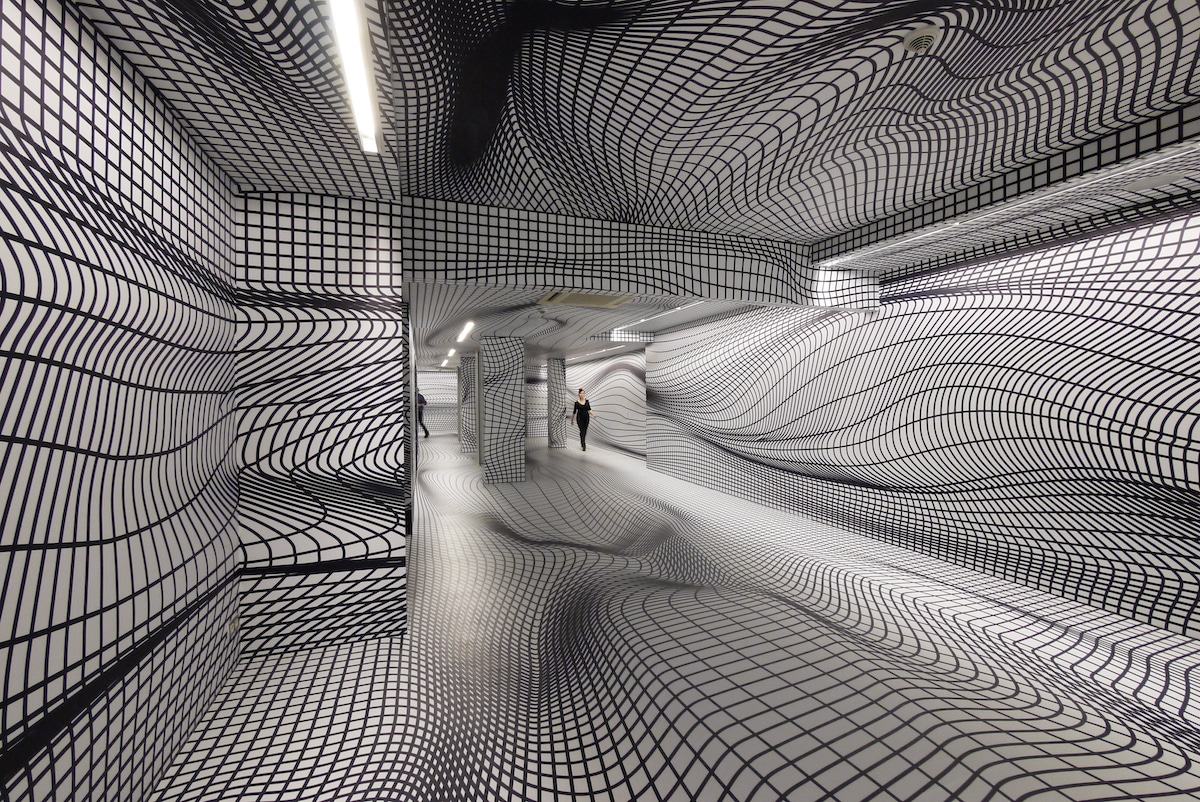
“Untitled,” DIRIMART Gallery, Istanbul, 2011.

Galerie im Taxispalais, Innsbruck, 2014.
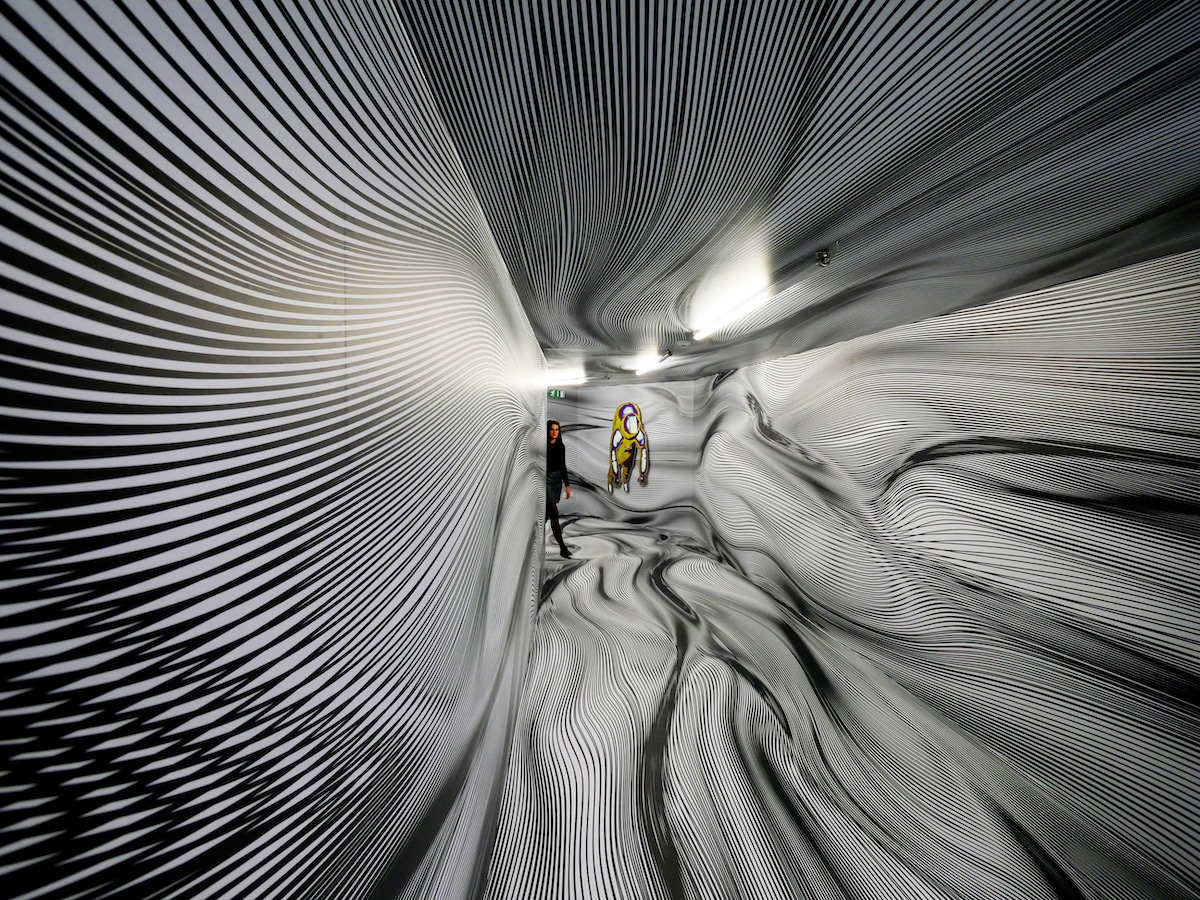
“Untitled,” Galerie Mitterrand, Paris, 2017.

“Artists&Robots,” Grand Palais, Paris, 2018.
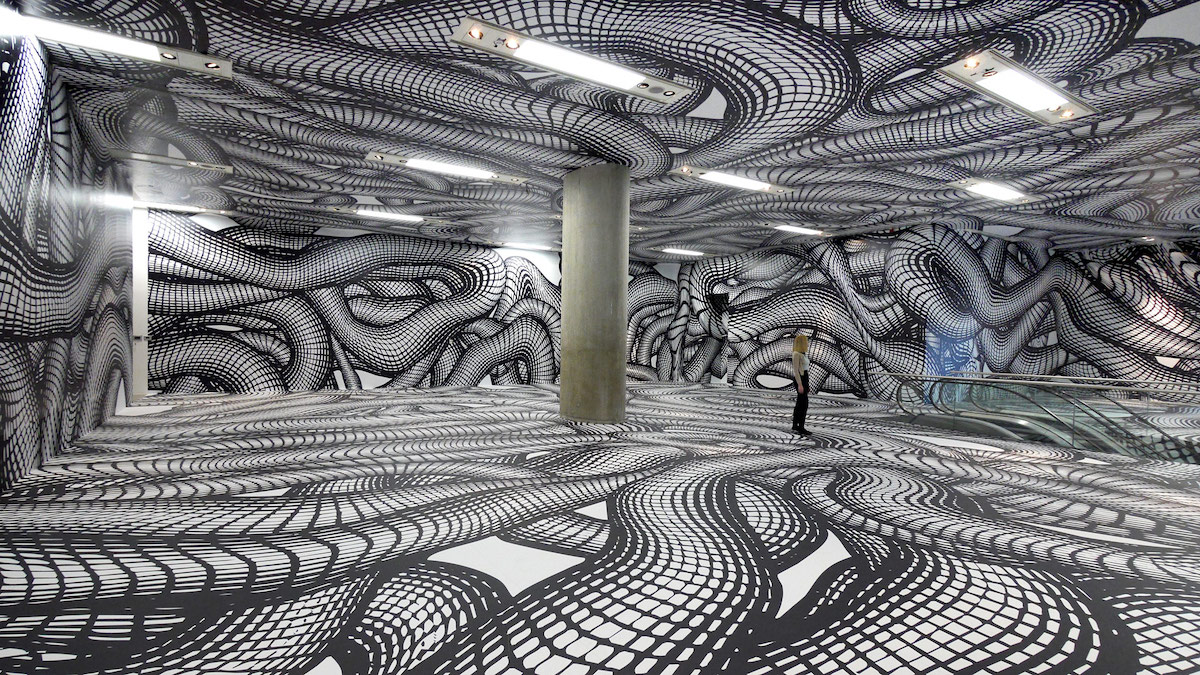
“MSU,” Museum of Contemporary Art Zagreb, 2014.
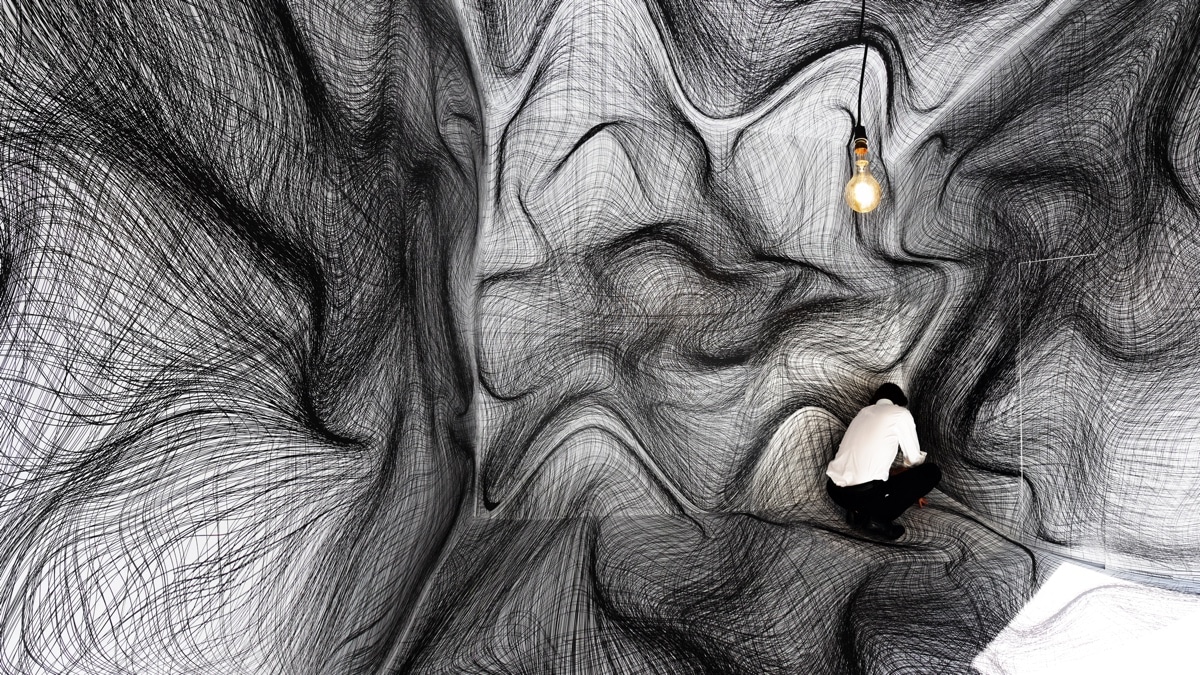
“Untitled,” Sigmund Freud Museum, Schauraum, Wien, 2015.
His repeating line patterns mold space and create optical illusions that engage visitors.
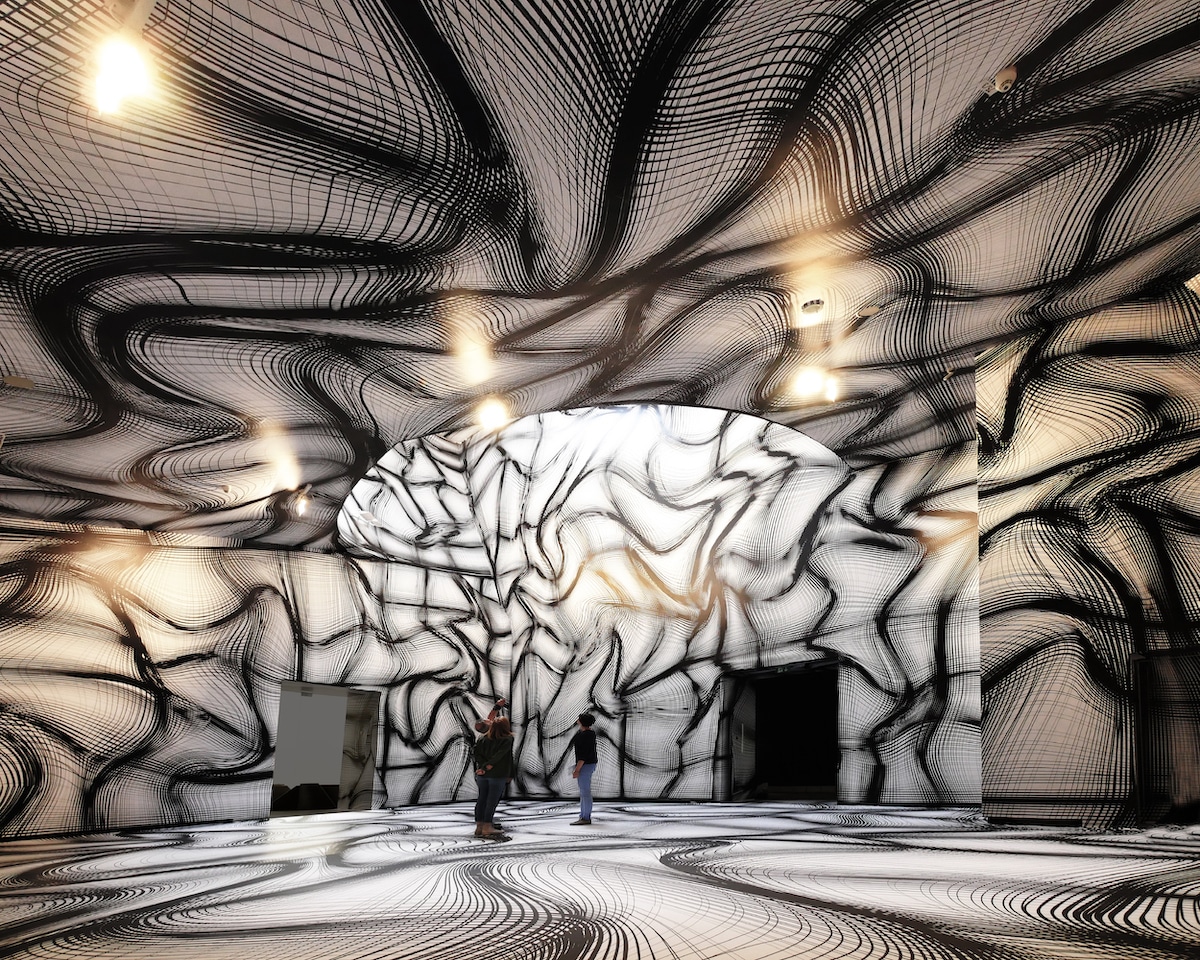
Marta Herford, Germany, 2018.
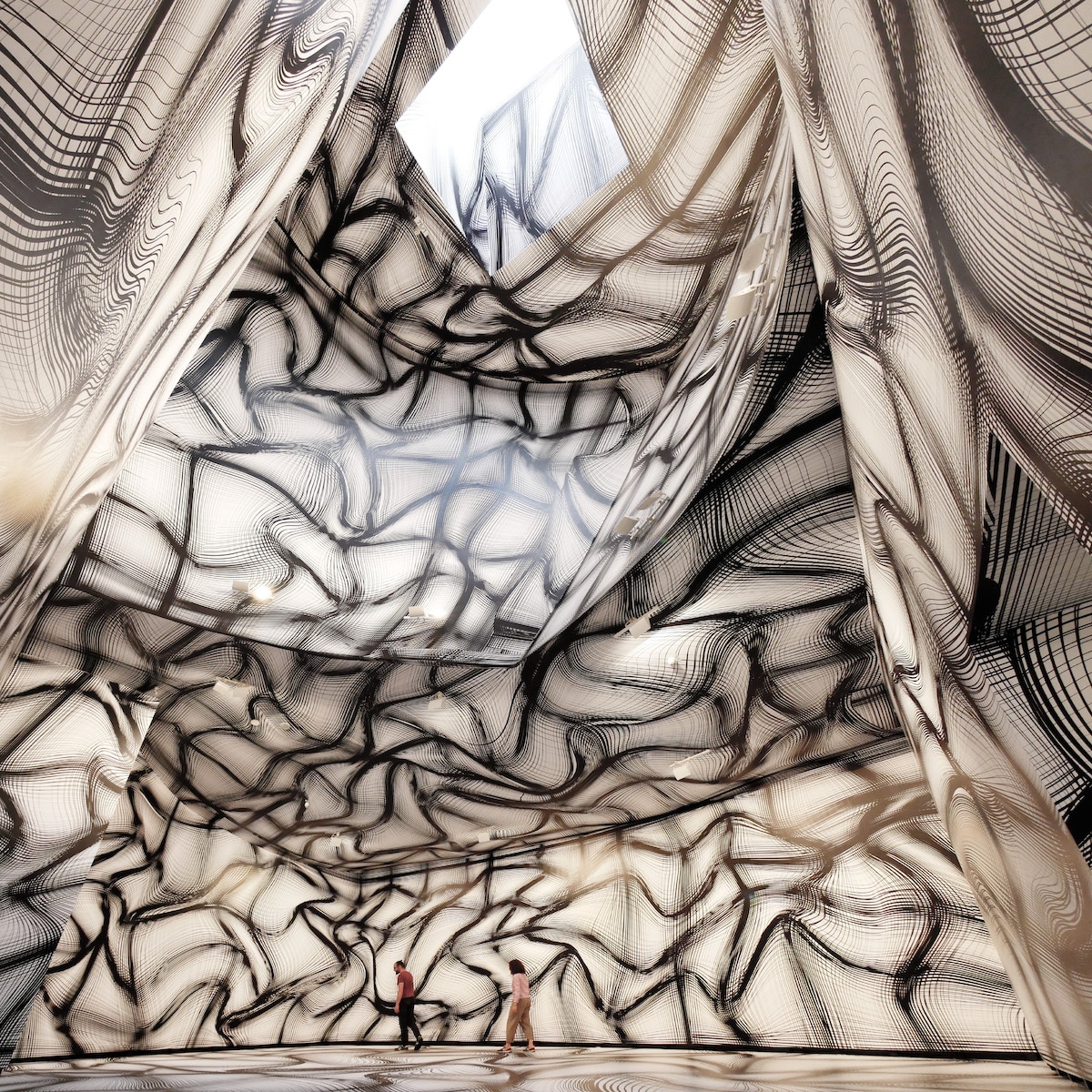
Marta Herford, Germany, 2018.
In addition to physically painting a room, Kogler also uses projections to transform specific spaces.
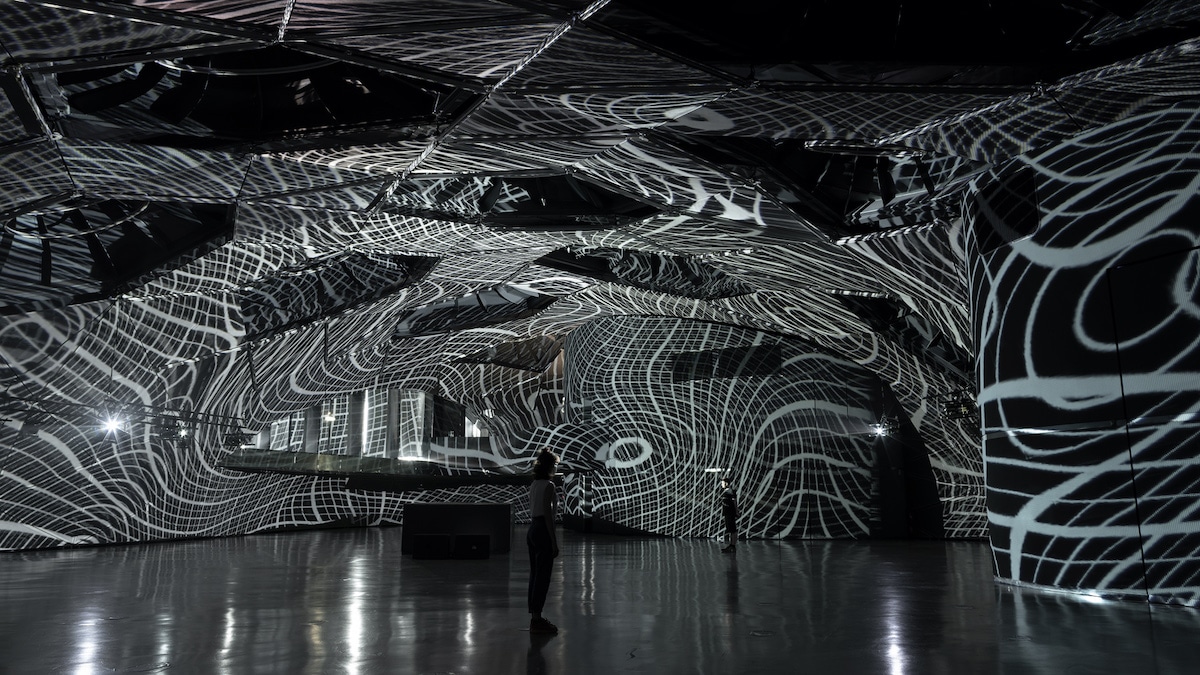
“Connected with …,” Kunsthaus Graz, 2019. (Photo: Universalmuseum Joanneum/ N. Lackner)
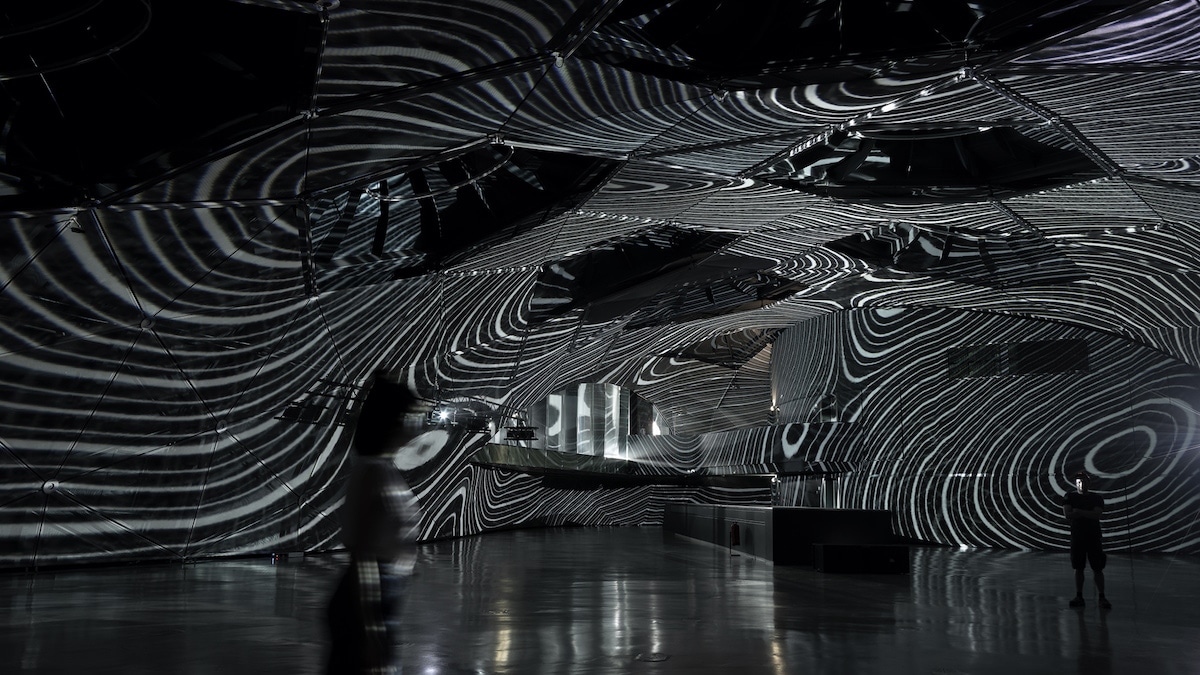
“Connected with …,” Kunsthaus Graz, 2019. (Photo: Universalmuseum Joanneum/ N. Lackner)

“Connected with …,” Kunsthaus Graz, 2019. (Photo: Universalmuseum Joanneum/ N. Lackner)












































































